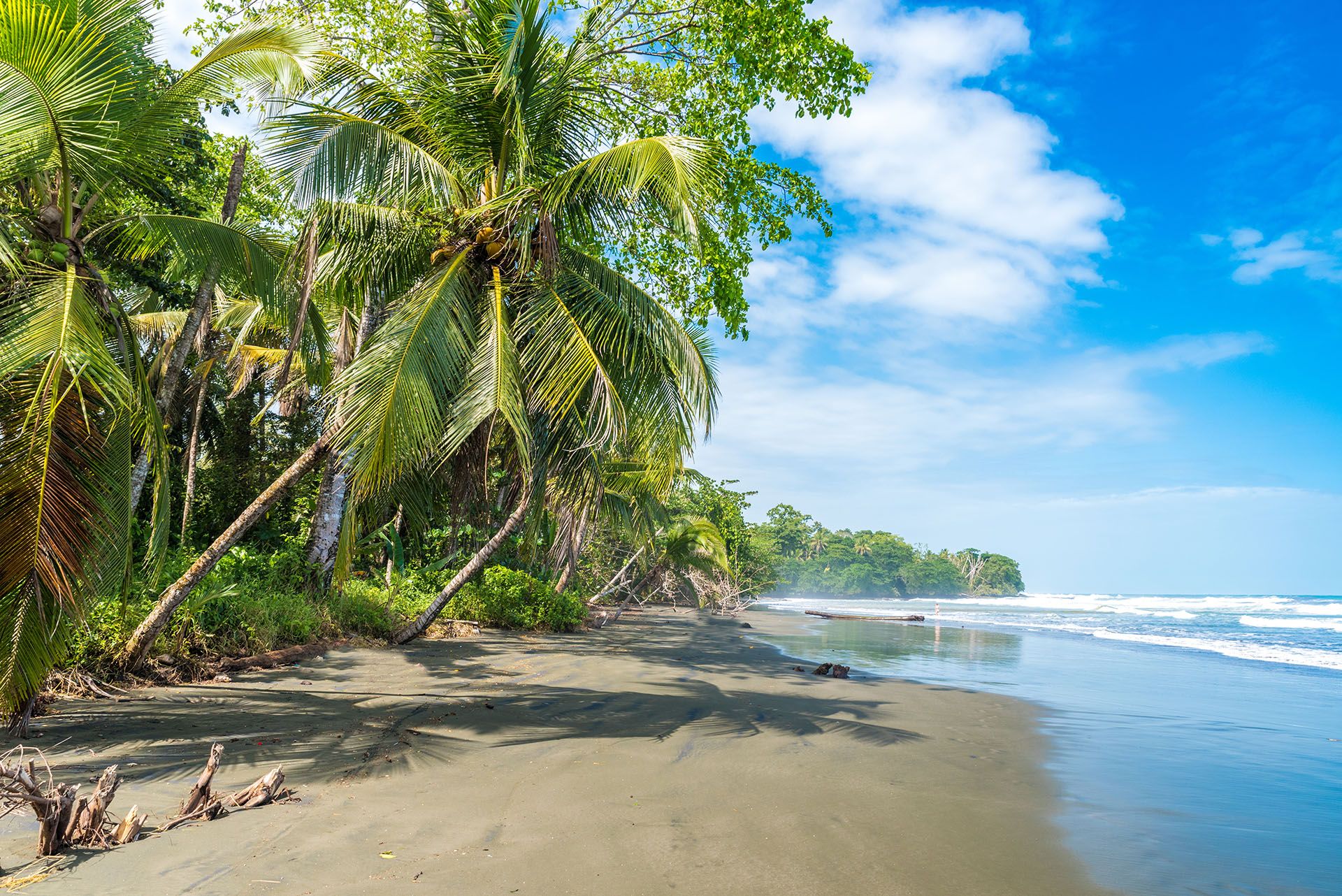What to do in Costa Rica in September
September’s the rainy season, which might sound like a downside — but it actually changes the whole feel of the country, in a good way. Mornings are usually dry, so you can get out and explore, and by afternoon, the rain rolls in.
It’s also when Costa Rica celebrates Independence Day, on September 15. If you're around then, expect parades, traditional music and dancing, and plenty of food. It’s not hard to stumble into a celebration — most towns get involved, and it’s a nice way to experience the local side of things.
Whale and Dolphin Festival in Uvita
This is prime whale-watching season on the Pacific coast. Uvita hosts a festival during September, and it’s built around the migration of humpback whales that pass through Marino Ballena National Park. The park’s known for a sandbar shaped like a whale’s tail — you’ll see it if you’re flying in or looking at drone shots — and boat tours head out daily.
You’ve got a good shot at seeing whales and dolphins this time of year, especially moms with calves. The festival also brings music, local food stands, handmade goods, and conservation talks. Even if you don’t go out on the water, it’s a fun time to be in town. This is a great thing to do in Costa Rica with kids.
Go canyoning and waterfall rappelling
This is the season when waterfalls are at their strongest, which makes it a great time to go canyoning. Around La Fortuna and Arenal, there are trips that combine rappelling down waterfalls, hiking through narrow jungle canyons, and ziplining over rivers. Some of the falls are seriously tall — around 150 feet — but everything’s guided, and they’ll walk you through the process.
It’s sweaty, muddy, and a full-body workout, but it’s a blast if you like being out in nature. And afterwards, you can head straight to one of the nearby hot springs to clean off and chill out.
Butterfly Yards at La Paz Waterfall Yards
If you’re not in the mood for something active, La Paz is a solid low-key day trip. The waterfalls there are pretty intense during the rainy season, and the butterfly observatory is at its busiest. There are thousands of butterflies inside, and you’ll usually see some emerging from chrysalides or flying around the paths.
The park’s easy to navigate, with paved walkways and lookouts, and there are other spots to check out too — like hummingbird yards, frog enclosures, and areas for rescued animals like jaguars and pumas. It’s a good all-in-one stop if you want nature without needing to gear up for a hike.





